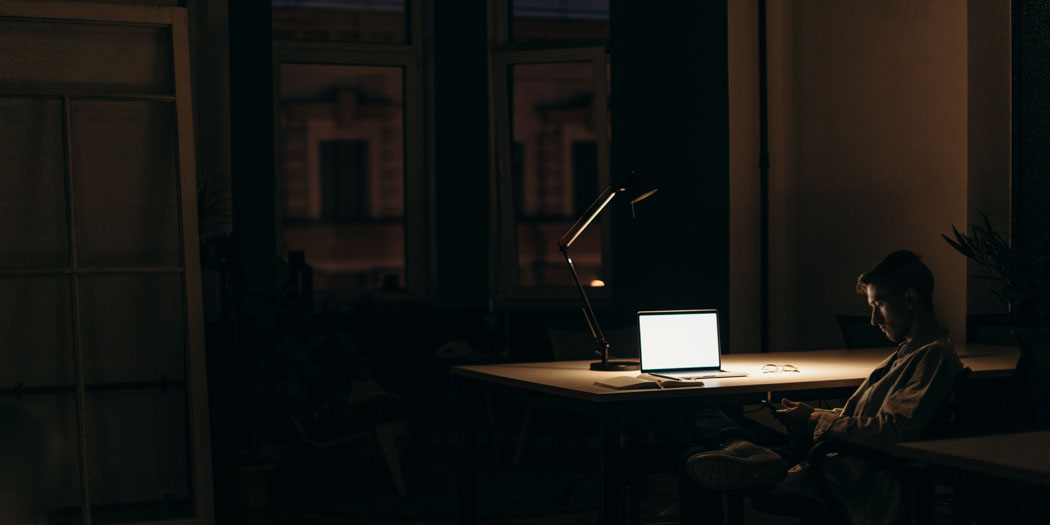Complete lockdown and working from home have only been a reality for a privileged part of the population, but the reliance on technology, for a whole range of activities, is undoubtedly a real aspect of our society.
La beauté est dans la rue
Poster from May 1968
“Future” is one of the most frequently heard words of recent times. Urban planners, sociologists and psychologists have also debated what the city will be like after COVID-19. Some of their speculations include the construction of self-sufficient housing, equipped with garden plots for growing vegetables and 3D printers for creating any required objects. We’ll seek out hygienic, aseptic, contagion-proof spaces. In this “smart” future, self-driving cars will roam the streets, drones will drop off deliveries, and artificial intelligence will control the traffic. It’s possible that, after having experienced lockdown and exposure to infection, the trend will increasingly be for people to enclose themselves within domestic bubbles that also become spaces for work and (virtual) socialising, places that contain all aspects of our lives. In this imaginary future, the streets are at risk of becoming irrelevant or even potentially dangerous. Moreover, what need would there be to go out or travel, if an automated home can offer everything you could possibly require?
In 1909, Edward M. Forster published a short science fiction story titled “The Machine Stops”. Although he’ll be remembered more for his critical accounts of Victorian class relations and conflicts, as in Howard’s End (1910) and A Passage to India (1924), his foray into science fiction produced one of the most interesting technological dystopias of the twentieth century. Forster wasn’t the only writer of his time to be concerned about the effects of the technological revolution. A sombre, sceptical vision can sometimes be found in Verne and Wells too. Would humans be capable of governing the forces that are rapidly transforming all aspects of their lives? In England, the rejection of industrialisation, a process that was radically changing not only workers’ conditions but also the landscape, gave rise to the publication of anti-urban utopias and ecological stories like William Morris’s News from Nowhere (1890), in which, in a harmonious future, the countryside replaces the polluted city, and the slums are demolished. But, when reading Forster today, one inevitably realises that his intuition was able to anticipate, better than other authors, some of today’s pressing issues.
The main character in “The Machine Stops” is a woman named Vashti. She is about five feet tall, a “lump of flesh” who lives in an unventilated, windowless hexagonal room. She’s alone all day, never goes out, and yet she knows thousands of people with whom she has long conversations by means of numerous technological devices. She spends her time sitting in an armchair, just like, in fact, the rest of the world’s inhabitants, chatting from a completely empty room, hoping these “lectures” will bring some kind of personal gratification. Her place is hyper-technological: “There were buttons and switches everywhere—buttons to call for food for music, for clothing. There was the hot-bath button, by pressure of which a basin of (imitation) marble rose out of the floor, filled to the brim with a warm deodorized liquid. There was the cold-bath button. There was the button that produced literature, and there were of course the buttons by which she communicated with her friends. The room, though it contained nothing, was in touch with all that she cared for in the world.” (1)
The fantasy of an automated habitat also appears in other stories of the time, just as artificial cities and houses of the future fill the pages of books and magazines. Silent films were experimenting with the comic effects of technology, as Segundo de Chomón did with Hôtel électrique (1908) and Charles Chaplin with Modern Times (1936). The mechanisms feed, shave, cut sausages and, in the end, short-circuit and drive their users mad. But the image of Forster’s Machine, feeding all of humanity locked in an underground city, represents a particularly dark, depressing future. Isolated and disconnected from each other, Vashti and her friends have ceased to be humans. These denizens of the future, after nature has been tamed, live underground in hive cities, all of them the same. They are confined to their cells, afflicted by the “terrors of direct experience”, fed and controlled by a Machine which they worship as a divinity. “But there came a day when, without the slightest warning, without any previous hint of feebleness, the entire communication-system broke down, all over the world, and the world, as they understood it, ended.” (2)
Forster’s story has two remarkable insights. The first is the possibility of a life lived in a cell, locked up, surrounded by virtual substitutes for human relations and fed by means of a system of “home” deliveries. Supplies—nutritional, medical, and musical—arrive through tubes. This scenario inevitably reminds us of the present pandemic’s consequences for part of humanity: atomisation, disconnection, and social isolation in domestic bubbles, aided by technology that has been able to provide tools for working and entertainment, even supplanting human relationships. Complete lockdown and working from home have only been a reality for a privileged part of the population, but the reliance on technology, for a whole range of activities, is undoubtedly a real aspect of our society.The pandemic has simply accelerated trends that were already underway: e-commerce, cinema streaming platforms and virtual meetings. Just look at the rising share prices of these companies and how the fortunes of their owners have grown. We still don’t really know what kind of social, labour, and even spatial effects we’ll experience in the coming years, as our cities are bound to undergo rapid transformation. These changes are happening very fast, so fast that society can barely assimilate them, nor can politics regulate them. Although there are now hundreds of “riders” out there delivering pizzas, while Amazon vans drop off parcels, we are yet to fully accept that, sooner or later, these tasks will probably be carried out by machines. And, one day, the utopia of a system of production, logistics and distribution of consumer goods will come true, without any need for workers. The house will also be the triumph of that dystopia of total control that many people thought they were just watching on “Big Brother”, while elsewhere in their own house, more insidiously, data was already being collected through sensors planted in their toasters, thermostats and fridges.
The second interesting aspect in Forster’s story is the possibility that this relation of dependence might suddenly break down. The machine can stop. It’s a possible scenario, something that New Yorkers had a taste of in the 2003 blackout, as did Google users in December 2020, even if it was only for 45 minutes. It would be an interesting fictional experiment to imagine how a civilisation of the future, even more dependent on technology than we are, would respond to such a sudden power outage, loss of data, and widespread disconnection.
As Slavoj Žižek and Mike Davis have explained in their different ways, the challenges faced by humanity today are so great that our only way out is radical change, which, in Davis’s view, would entail a return to utopian thinking. Although the need to revisit utopian ideas, with their tendency towards rigid, totalitarian perfection, would not be desirable, it’s also true that dystopian tales have reached saturation point. The consumption of apocalyptic imaginaries, now that we’ve ended up living in a dystopian reality on a global scale, is now more likely to induce fatigue as opposed to the morbid appeal it had a few years ago. Among the more dystopian perspectives we come across today, Forster’s automated world must be included, insomuch it shows a total dependence on a technological “utopia” that virtualises all social and working relations. It also implies submission to the control wielded by a Machine with unknown aims, beyond that of exploiting our role as docile, submissive consumers. We have no choice but to revisit radical thinking and, without a doubt, if there is to be any change, we will have to take to the streets. “Interiors are no good”, Louis-Ferdinand Céline wrote in Journey to the End of the Night (1932). Although these four walls provide an illusory sense of security—cared for, fed, and entertained by technology—locking ourselves inside Forster’s houses would be our biggest mistake.
Notes:
(1) Forster, Edward M., “The Machine Stops”, The Oxford and Cambridge Review, November 1909.
(2) Ibid.




